How to choose surfboard fins for your surfboard can become a bit of a nightmare of choices, but with the right set of fins for the conditions the board was designed for really can make all the difference.
Believe it or not most surfers will overlook surfing fins as not part of the integral design of the surfboard which when you ask any shaper or the manufacturer of the board the fin set up and type of fins you would use are factors as crucial as rider weight, volume and where you would surf and your progression in your surfing journey. That disconnect can be cleared up with just a few bits of surfing knowledge and then you are good to start looking through our surfing fins selection to try some new fins for your board. It can make all the difference to your surfing.
Although longboard fin boxes are generally cross-compatible across all longboards or single fin boards, the rest of the fin boxes out there are almost certainly equipped with one of these three box types of which Wild Atlantic Surf Co supply all : FCS I , FCS II ( twin tab or series 2 twin tab) and Futures ( single tab). FCS I fins can be used in FCS II boxes with inserts or infill kits
One of our main goals in fin selections is choice and variation, as surfers ourselves we are always looking to push boards into new realms and limits as are our team. Though fins will often come with several box settings ( some even 5 fins these days) it worth noting that twin fins are for boards that really have twin boxes set by the shaper and quads the same. You can get some experimentation with thruster / twin crossover 2 plus 1 fins like Asher Pacey’s signature twin fin sets but in large follow the rule twin for twin, quad for quad, thruster for thruster etc. Longboard fins can also be quite purist, a performance longboard will not go well with a classic large longboard fin but will light up with a 2 plus 1 set up and the larger the centre fin will give more lift to the scenario that presents itself.
So let’s get cracking – how to choose surfboard fins that are right for you.
Firstly let’s look at Fin size in comparison to rider weight :
| RIDER | LBS |
| GROM | UP TO 115 |
| SMALL | UP TO 155 |
| MEDIUM | 140-190 |
| LARGE | 175+ |
And next, let’s determine the fin configuration in your surfboard and the characteristics those fins bring to those type of boards. Learning about the characteristics will give you options to use variations of fins to get a different feel from your surfboard.
Types of Fin Boxes / Configurations
Single Fin: A single fin box is most common on longboards and is the most traditional fin configuration. Turning with a single fin is limited, meaning single fins are ideal for fast, straight shot surfing. Single fins will provide stability, control, and predictability to your longboard. Longboard single fin boxes are long and allow you to move the fin forward for a looser feel, or further back for more control. Flex fins have really changed Longboard fins as have variations between pintail and square tails ( more traditional). See our Shapers Longboard Selection.
Thruster Fins: Since the 1980’s, thruster 3 fin setups are the most common configuration and can be found on a variety of surfboard shapes and sizes. The two outer fins are closer to the middle of the board, angled towards the board center (”toed-in”) and can be flat on the inside in order to increase water tracking and speed. The center fin is closest to the tail and is symmetric on both sides for stability Tri-fins perform well because they add stability, control and maneuverability that beginners and pros excel on. When fin clusters are brought forward this will loosen up the tail which has been popular lately with surfers then choosing thruster fin sets with a slightly smaller centre fin such as the Al Merricks from Shapers. Those wanting to use thruster performance fins for the first time may want to consider the Core Series. Our pivot and driver series are great for vertical and carving performance.
Quad Fins: Quad fin configurations offer speed in smaller surf by channeling the water to the end of the surfboard and out the tail for acceleration and they are excellent in larger more hollow waves for hold. Two fins near the rails of your surfboard will also add stability and hold in big-wave surfing. Quad fins are great for generating drive through carving turns. Thruster sets with quad rears combos can make excellent choices for 5 fin surfboards. Quad keels are an extension of twin style and can add extra lift and a traditional feel to a quad surfboard and still apply speed.
Twin Fins: A resurgence recently of twin surfboards but a shape that was formatted in the 70’s that should have never really gone away, in fact it was only drowned out slightly by the thruster revolution of the 80’s and has had a major comeback since. Die hards such as Mark Richards charged twin fin combos with 2 plus 1 which with todays materials and style masters has provided not only a new approach to what twin fins can do in terms of pivot and performance but hold in larger waves with retro keels getting a make over.
Spoilt for choice? Just one last piece of surf science to absorb but bookmark this page and you will have a guide you can refer to time and time again. When you are selecting which type of fin bear these measurement guide in which will help you greatly or you can always contact us directly for any questions.
Choosing Your Fin:
The base length of the fin is the widest point of the fin, and sits flush with the board once installed. This length can affect how the board will respond to turns. Longer fin bases create trajectories for water to go past – so your surfboard will move faster. If you want to make sharp turns, however, look for a shorter fin base length.
Foil refers to the shape of the outside and inside faces of your fin, thinnest near the tip and thicker near the base. Foil alters the flow of the water over the fin surface and has a direct impact on the performance of your fins and board. Middle fins are always symmetrical and convex on both sides (50/50) for even distribution and stability, while outside fins are usually convex on the outside face and flat or curved on the inside. A flat inside face creates a solid balance of control, speed, and playfulness, while a curved or concave inside face maximizes lift with minimal drag, ideal for speed generation and fluidity.
The flexibility of a fin, or lack thereof, can significantly affect the way a surfboard rides. In general, a flexier fin will provide a skatier feel on more playful waves, but a stiff fin is ideal in faster more hallow waves.
It is important to note that high end fins can be both soft and stiff – they have flex patterns. Many fins now have a stiffer base for tracking and stability, with a softer tip that make it easier to break your board loose while turning.
As a rule of thumb, stiffer fins work well for all ability levels; they are forgiving, stable and predictable, creating a solid platform for progression and big wave riding alike. Soft and flexible fins are great for making fast, sharp turns and will give free surfers a lively feel to their boards, but are more difficult to control compared to stiff fins.
The height is measured from the base of the fin to the tallest point of the fin. This measurement can change your board’s stability and grip through turns. For surfers who desire a board that is easy to control, a taller fin will be more forgiving and handle turns in a relaxing manner. Shorter fins do not grip the water as well, but rather allow the board to be more buttery when turning, ideal for spin-like maneuvers on the water, for example.
Cant is the tilt of the fin in degrees, in relation to the base of your surfboard. For example, a fin that is straight up in the fin box has no cant (90°) and will likely make your ride faster, while anything more than 90° will increase responsiveness. In order to enhance rider-to-board connectivity and responsiveness, especially through turns, you will benefit from canted fins. The less cant a fin has the more drive and acceleration your board will have but will also be less playful. In turn, the more cant a fin has the looser and more maneuverable your surfboard will feel.
Top Tips In Summary When Choosing Your Surfboard Fins:
- Stiff boards paired with small, flexible fins with a little sweep will add playfulness.
- Softer or looser surfboards will go faster and have better drive when paired with stiff, large fins with ample sweep.
- The cluster or placement of the fin refers to how spread out or how close together the fins will be when attached to your board.
- A spread out cluster results in more control and wider, drawn out turns. A cluster that is closer together results in faster, more responsive turning, found in
- Fin location in relation to the tail will affect your board’s feel. Set forward creates a looser feel which is the case in our winged fish and performance shortboard . Set further back provides more hold and control, found in our step up surfboards.
- Surfboards with a lot of rocker may benefit from larger fins. Ideally, your board’s rocker matches the curve of the wave, which is why a more “rockered” board matches up well with a more curved, “hollow” wave. Larger fins will help you hold onto the steeper face of the wave.
- Surfboards with wide tails operate better with larger fins such as our retro fish.
- Shortboarders riding large waves will want a larger, more raked fin.



















